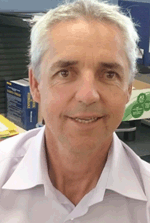An overview of the new Geological and Bioregional Assessments Program
Anthony Swirepik A , Andrew Stacey A B and Rod Dann AA Department of the Environment and Energy, GPO Box 787, Canberra, ACT 2601, Australia.
B Corresponding author. Email: andrew.stacey@environment.gov.au
The APPEA Journal 58(2) 625-629 https://doi.org/10.1071/AJ17066
Accepted: 22 February 2018 Published: 28 May 2018
Abstract
As part of the AU$86.3 million ‘Towards a New Energy Future’ package, the Australian Government has committed AU$30.4 million to undertake the Geological and Bioregional Assessments Program. This program aims to encourage sustainable gas development through a series independent scientific studies into the potential environmental impacts of shale and tight gas exploration and production.
These studies, conducted by Geoscience Australia and CSIRO, supported by the Bureau of Meteorology and managed by the Department of the Environment and Energy, will focus on three basins (regions) that are prospective, but underexplored for shale and tight gas. The program seeks to encourage exploration to bring new gas resources to the East Coast Gas Market within the next 5–10 years, increase the understanding of the potential environmental impacts posed by gas developments and increase the efficiency of assessment, monitoring and ongoing regulation, including improved data capture and reporting.
The Cooper Basin and the Isa Superbasin have been selected for investigation with a third basin expected to be announced by mid-2018. The program will be delivered in three stages over 4 years and will investigate areas prospective for shale and tight gas within these regions. This independent, transparent, science-based approach aims to assist in building community understanding of, and confidence in, the capacity for safe and environmentally sustainable unconventional gas developments.
Keywords: Australian Government, Cooper Basin, East Coast Gas Market, environment, environmental impact, Isa Superbasin, mitigation and management, monitoring and management measures, regulatory efficiency, shale gas, sustainable development, tight gas, unconventional gas.

Anthony Swirepik is the Director of the Geological and Bioregional Assessments (GBA) Program in the Department of the Environment and Energy. He has considerable experience in working at the interface between government policy, programs and science to deliver information to decision makers across government, industry and the community. In the 3 years before the working on the GBA Program, Anthony was Director of the Bioregional Assessment program, managed the Office of Water Science Research Program, and managed the delivery of the Independent Review of the Bund Wall at the Port of Gladstone. Anthony has a strong interest in the science of climate change, having managed the Australian Climate Change Science Program and coordinated Australia’s contribution to the IPCC Fifth Assessment report. An ecologist by training, his early career was with CSIRO, focussed on weed biological control, working on temperate pasture weeds such as Peterson’s curse and environmental weeds such as Bitou bush. |

Andrew Stacey is a Senior Project Officer in the Geological and Bioregional Assessments Program in the Department of the Environment and Energy. He is a petroleum geologist ‘by trade’, with over 15 years of experience in academia and government geoscience and provides technical advice to the team on all aspects of unconventional hydrocarbons. Prior to joining the Department, he worked for the Geological Survey of Victoria and for Geoscience Australia in several technical, advisory and managerial roles and has extensive experience in the basins of Australia’s southern margin, as well as in the unconventional hydrocarbon potential of Australia’s onshore basins. Andrew holds a Ph.D. from the University of Tasmania and an honours degree in geology from the University of Technology, Sydney. He is a member of PESA, AAPG, SPE and the Australian Institute of Energy. |

Rod Dann is the Assistant Director of the Geological and Bioregional Assessment Program in the Department of the Environment and Energy. He is a hydrogeologist, with experience working in groundwater research, consulting (contaminated-site assessment and remediation), government water policy and technical advice. Prior to working with the GBA Program, Rod worked in the Office of Water Science, supporting the work of Independent Expert Scientific Committee (IESC) and has also worked at the National Water Commission. Rod has a Ph.D. (hydrogeology) from the Australian National University, Engineering Masters degree (groundwater) from UNSW and an honours degree in geology from University of Canberra. |
References
Armour Energy Limited (2017). ‘Reserves and Resources.’ Available at https://www.armourenergy.com.au/reserves-resources/ [Accessed 22 January 2018]Australian Energy Resources Assessment (AERA) 2017. Australian energy resources assessment interim report. Geoscience Australia, Canberra. Available at http://www.ga.gov.au/aera [Accessed 22 January 2018]
Australian Government (2017). ‘Towards a New Energy Future.’ (Department of the Environment and Energy: Canberra.) Available at http://www.environment.gov.au/system/files/resources/dd3299ed-ae89-4908-9c8a-9d17b0153e43/files/factsheet-new-energy-future.pdf [Accessed 23 January 2018]
Australian Government (2018). ‘Bioregional Assessments.’ Available at http://www.bioregionalassessments.gov.au/ [Accessed 22 January 2018]
Bioregional Assessments (2018). ‘Geological and Bioregional Assessments.’ (Australian Government: Canberra.) Available at http://www.bioregionalassessments.gov.au/geological-and-bioregional-assessments-0 [Accessed 22 January 2018]
Geoscience Australia (GA) (2015). ‘Oil and Gas Infrastructure.’ Available at http://services.ga.gov.au/site_9/rest/services/Oil_Gas_Infrastructure/MapServer [Accessed 22 January 2018]
Hall, L. S., Buchanan, S., Totterdell, J. M., Lai, É. C. S., Langford, R. P., Sundaram, B., Ransley, T. R., Glenn, K. C., Heugh, A., Inskeep, C., Zhu, R., Skeers, N., Stewart, G. (2018). ‘Rapid Regional Prioritisation for Tight and Shale Gas Potential of Eastern and Northern Australian Basins. Geological and Bioregional Assessment Program: Stage 1.’ Prepared by Geoscience Australia for the Department of the Environment and Energy, Australia. In preparation.
Raymond, O. L., Gallagher, R., and Highet, L. M. (2012). ‘Surface Geology of Australia. 1 : 2 500 00 scale. 2012 edn. (Geoscience Australia: Canberra.) Available at https://ecat.ga.gov.au/geonetwork/srv/eng/search#!b4088aa1-f875-2444-e044-00144fdd4fa6 [Accessed 22 January 2018]
Stewart, A. J., Raymond, O. L., Totterdell, J. M., Zhang, W., and Gallagher, R. (2013). ‘Australian Geological Provinces.’ 2013.01 edition. Scale 1 : 2 500 000. (Geoscience Australia: Canberra.) Available at https://ecat.ga.gov.au/geonetwork/srv/eng/search#!c3fac1d5-48c1-624e-e044-00144fdd4fa6 [Accessed 22 January 2018]


